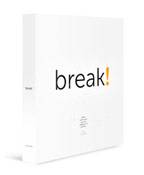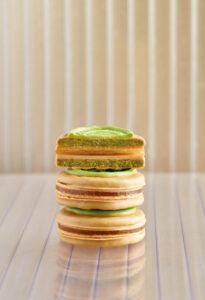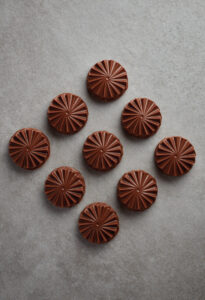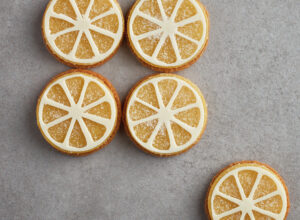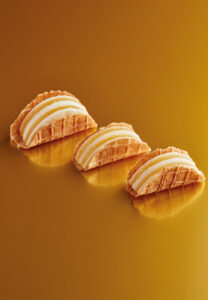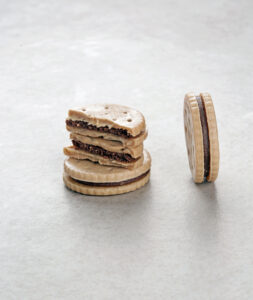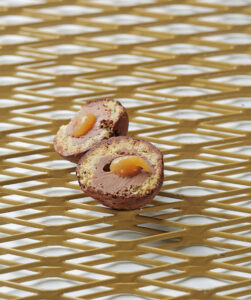Categories Pastry Chef Articles
Six very original tea pastries that you will find in Break! by Éric Ortuño
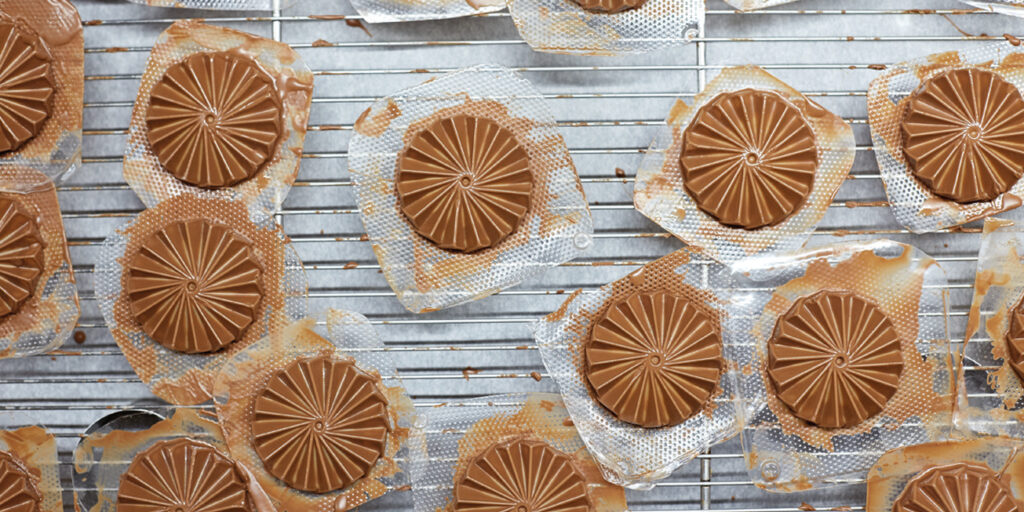
Éric Ortuño is the only chef to have won the Dulcypas Award for Best Tea Pastry in Spain twice. In his book Break!, he compiles the most emblematic cookies from different countries and teaches how this product can be updated by introducing cutting-edge technology, innovative concepts, and candy-making techniques.
Below we share six very original and creative proposals that show how to give a different look to the tea pastry, creations that can even be said to be close to the concept of the petit four.
Discover Break! by Eric Ortuño
Green tea and yuzu sablé. The precursor
This is part of the line of sablés with a denser structure. The egg provides greater consistency, slightly reducing its friability, that is, its ability to crumble.
This cookie is the precursor of other more sophisticated proposals that have played with the petit four concept and that have successfully participated in the Dulcypas Award for Best Tea Pastry.
It is also a good example of how to use a decoration technique with great possibilities, such as the conchadora to dye and flavor chocolate.
Reus. The best tea pastry in Spain 2020
In 2020, Ortuño won the Dulcypas Award for Best Tea Pastry in Spain for the second time with Reus.
On this occasion, the chef was clear that the important thing was to think first about the flavor and then the design. He looked for the best hazelnut, the Negreta variety from the Camp de Tarragona, to make, on the one hand, the gianduja and, on the other, to flavor the sablé. He chose Valrhona’s Azélia chocolate which has a touch of hazelnut. The third texture, creamy but elastic, he achieved with a salted caramel.
For the presentation, he designed a custom mold using a 3D printer and a small thermoformer.
The Lemon. A different and open format
The Lemon moves away from the classic cookie composition made up of two discs and a filling. Its different textures and components, with a fruit paste and a gianduja made with natural lemon peel, bring it closer to the idea of a petit four.
Technically, it is interesting to see how Ortuño makes sablé dough with cooked and grated egg yolk, which allows working with a small amount of water. Likewise, it incorporates flavor through the butter that gains relevance in the hydration of the gluten necessary to create the structure of the dough.
Piña colada taco. Griddle instead of oven
This creation has as its starting point a cocktail, the piña colada. Hence its filling, a sheet of pineapple and rum fruit paste combined with a gianduja to which grated coconut has been incorporated.
To reinforce this exotic character, the chef turns the traditional wafer into a Mexican ‘taco’. To achieve this, he works the dough on a griddle, instead of in the oven.
The other way around. Nothing is what it seems
Under the guise of a popular industry cookie, Ortuño proposes an experimental tea pastry in which the order of the factors is reversed, the inside is left out while the outside becomes the filling.
To assemble it, he coats a cookie-shaped PVC mold with Inspiration Almond chocolate, which is reinforced with a layer of ganache made from the same chocolate, and both components are allowed to crystallize. The interior, however, contains a cocoa cookie with an unexpected crunchy texture.
Crisp spheres. Cookie, truffle or dragee?
Surely Louis Dufour, supposed creator of the French Savoy chocolate truffle, would agree with the many applications that this invention offers in other preparations. An example would be these double-filled, double-covered crispy spheres.
Its base is a molded cookie that is filled with hazelnut and chocolate praline, and a salted caramel, covered with chocolate icing and reinforced with cocoa powder. He thus starts from the concept of a balled up truffle to end up making a stuffed and crunchy dragee with the coating pan.
